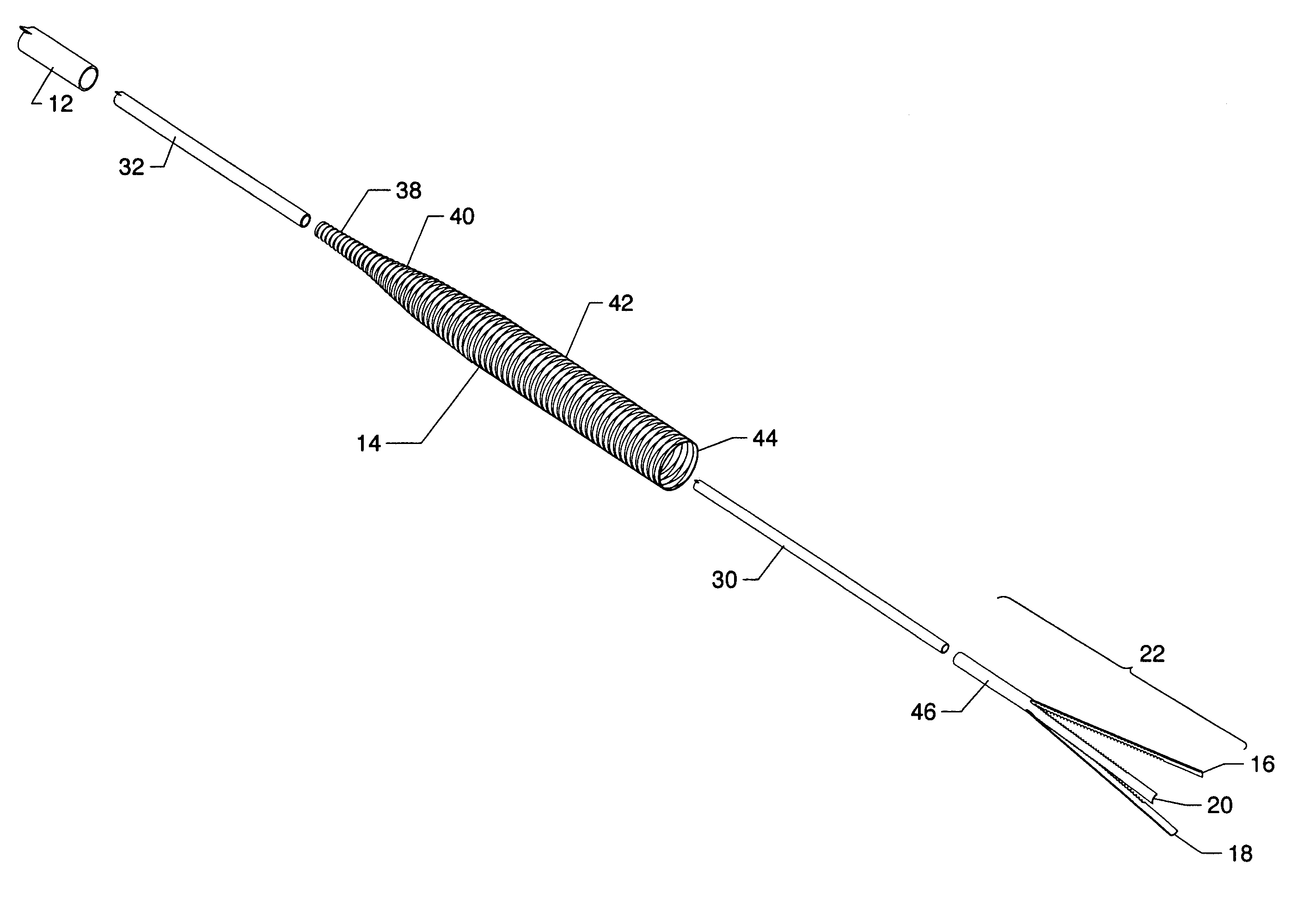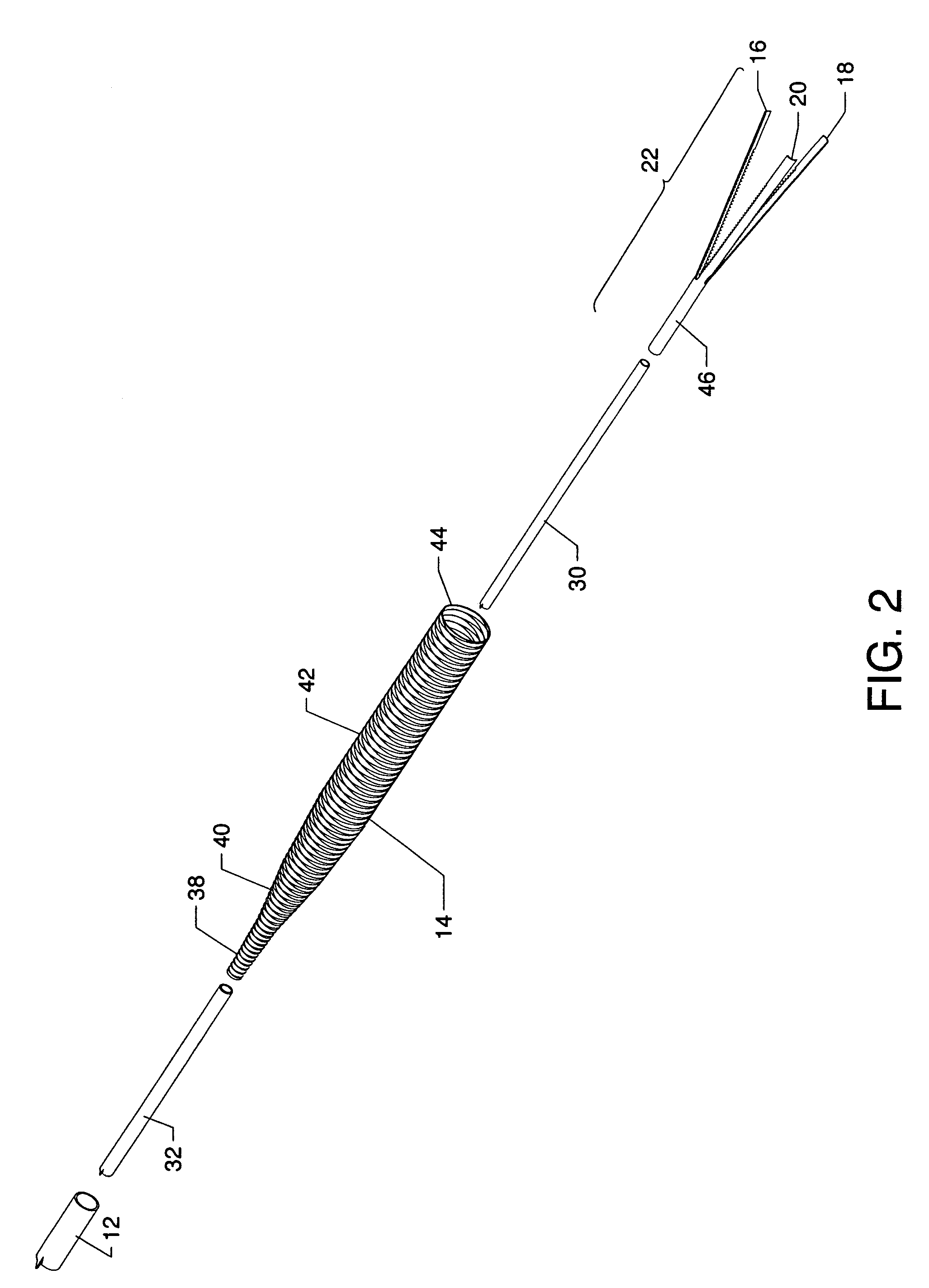Catheter for removal of an organized embolic thrombus
a catheter and embolic thrombus technology, applied in the field of catheters for removing organized embolic thrombuses, can solve the problems of reducing the effect of embolic material, reducing the invasiveness of surgical procedures, and reducing the risk of embolic complications
- Summary
- Abstract
- Description
- Claims
- Application Information
AI Technical Summary
Benefits of technology
Problems solved by technology
Method used
Image
Examples
Embodiment Construction
[0035]FIG. 1 is an isometric overview of the catheter 10 of the present invention for removal of an organized embolic thrombus. Fully or partially visible components of the present invention include a multiple function capture / delivery sheath 12, a distally located capture sleeve 14 shown in memory shape consisting of a nitinol and polymer mesh (shown in FIG. 3) extending distally from within the capture / delivery sheath 12, serrated fingers 16, 18 and 20 of a grasping mechanism 22 (FIG. 2) shown in memory shape, a capture / delivery sheath operator 24 in the form of a manifold attached to the proximal end of the capture / delivery sheath 12, a capture sleeve operator 26 in the form of a manifold in general longitudinal alignment with the capture / delivery sheath operator 24, and a grasping mechanism operator 28 in the form of a manifold in general longitudinal alignment with the capture sleeve operator 26.
[0036]FIG. 2 is an exploded isometric view of the components located at the distal ...
PUM
 Login to View More
Login to View More Abstract
Description
Claims
Application Information
 Login to View More
Login to View More - R&D
- Intellectual Property
- Life Sciences
- Materials
- Tech Scout
- Unparalleled Data Quality
- Higher Quality Content
- 60% Fewer Hallucinations
Browse by: Latest US Patents, China's latest patents, Technical Efficacy Thesaurus, Application Domain, Technology Topic, Popular Technical Reports.
© 2025 PatSnap. All rights reserved.Legal|Privacy policy|Modern Slavery Act Transparency Statement|Sitemap|About US| Contact US: help@patsnap.com



